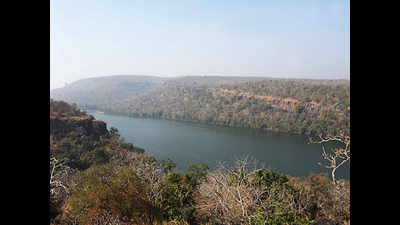- News
- City News
- jaipur News
- Untreated waste spikes pollution in Rajasthan rivers
Trending
This story is from August 22, 2019
Untreated waste spikes pollution in Rajasthan rivers
Rajasthan’s two perennial rivers—Banas and Chambal— are a step closer to joining the list of the country's most polluted rivers due to rising levels of untreated industrial and biomedical waste flowing into these water bodies

Chambal River in Kota and Banas River in Tonk
JAIPUR: Rajasthan’s two perennial rivers—Banas and Chambal— are a step closer to joining the list of the country's most polluted rivers due to rising levels of untreated industrial and biomedical waste flowing into these water bodies.
Rising pollution has pushed both the rivers to Level-III from Level-IV forcing the state to implement a rejuvenation plan for both.The inspection report by the Rajasthan Pollution Control Board (RSPCB) found that the most polluted stretch of Chambal river was around the Rangpur Ghats.
“The water samples revealed that it has high levels of chloride from human and agriculture sources. Another stretch at Keshoraipatan, which surprisingly does not have industries (small scale, cottage, household etc.), is high on pollution arising out of anthropogenic activities such as bathing, toilet flush and washing,” said Shailaja Deval, member secretary, RSPCB. the 960-km Chambal river, which originates at Mhow in MP, covers 254 km in Rajasthan.
Similar is the story of Banas river, which originates from Chambal in Mewar. The stretch from Sawai Madhopur and Tonk is found to be most polluted with high anthropogenic activities. “The Biological Oxygen Demand at stretches of Banas is very low. Heavy mining across the course has further aggravated the situation leading to a loss of its flora and fauna,” said Deval. The downgrading of status of both the rivers are based on samples collected in May 2017.
“Immediate provision of sewage treatment facility is needed. Converting the whole area to open defecation free and covering all domestic/public toilets with scientific faecal sludge management can help reduce this pollution,” said Deval.
Rising pollution has pushed both the rivers to Level-III from Level-IV forcing the state to implement a rejuvenation plan for both.The inspection report by the Rajasthan Pollution Control Board (RSPCB) found that the most polluted stretch of Chambal river was around the Rangpur Ghats.
“The water samples revealed that it has high levels of chloride from human and agriculture sources. Another stretch at Keshoraipatan, which surprisingly does not have industries (small scale, cottage, household etc.), is high on pollution arising out of anthropogenic activities such as bathing, toilet flush and washing,” said Shailaja Deval, member secretary, RSPCB. the 960-km Chambal river, which originates at Mhow in MP, covers 254 km in Rajasthan.
Similar is the story of Banas river, which originates from Chambal in Mewar. The stretch from Sawai Madhopur and Tonk is found to be most polluted with high anthropogenic activities. “The Biological Oxygen Demand at stretches of Banas is very low. Heavy mining across the course has further aggravated the situation leading to a loss of its flora and fauna,” said Deval. The downgrading of status of both the rivers are based on samples collected in May 2017.
Based on prime facie reports, the Malaviya National Institute of Technology (MNIT) was roped in to prepare a report on ways to curb pollution levels in the rivers. The road map prepared by MNIT says integrated fertilizer and pest management system are required at places vulnerable for pollution.
“Immediate provision of sewage treatment facility is needed. Converting the whole area to open defecation free and covering all domestic/public toilets with scientific faecal sludge management can help reduce this pollution,” said Deval.
End of Article
FOLLOW US ON SOCIAL MEDIA










